The portrait above is an ambrotype, or photograph on glass, by an unknown photographer. Ambrotypes were introduced in the United States in the early 1850s and remained popular for about a decade. They were simpler and less costly to produce than daguerreotypes. Eventually they were replaced by tintypes and albumen paper prints (such as the carte-de-visite), which were less fragile than glass plates.
The man in the photo is Charles Henry Crippen, a farmer who lived in the Berkshire region of western Massachusetts. He was born in 1822 in the town of Great Barrington. In 1844 he married Susan Isabelle Race, also from Great Barrington. They continued to live and farm there until Charles’s untimely death from heart failure in January 1865, when he was just 42 years old. Their union produced two children, a girl in 1857 and a boy in 1864. Six months after Charles died, the couple’s sixteen-month-old son died from pneumonia. Susan must have been devastated after losing both her husband and her son, but she still had a seven-year-old daughter to care for. She married again the following year.

Tucked inside the case of one of the portraits was a small newspaper clipping:
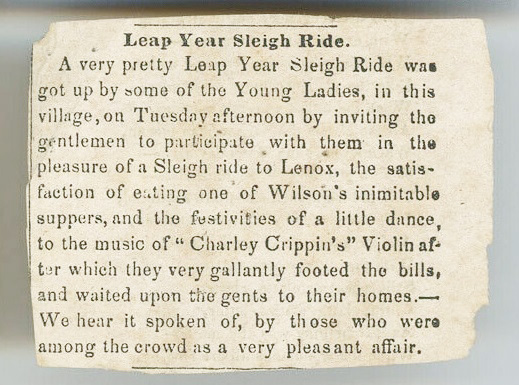
Leap Year Sleigh Ride
A very pretty Leap Year Sleigh Ride was got up by some of the Young Ladies, in this village, on Tuesday afternoon by inviting the gentlemen to participate with them in the pleasure of a Sleigh ride to Lenox, the satisfaction of eating one of Wilson’s inimitable suppers, and the festivities of a little dance, to the music of “Charlie Crippin’s” Violin after which they very gallantly footed the bills, and waited upon the gents to their homes. We hear it spoken of, by those who were among the crowd as a very pleasant affair.
The town of Lenox would later become closely associated with the music festival at Tanglewood, the summer home of the Boston Symphony Orchestra.

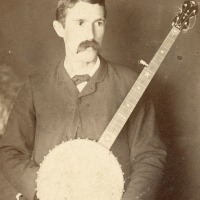
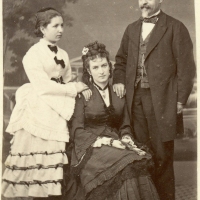
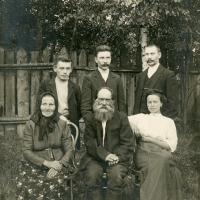
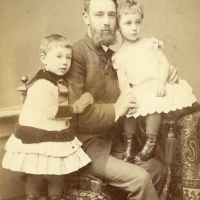
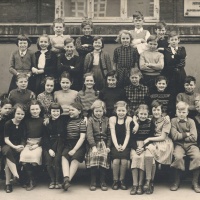
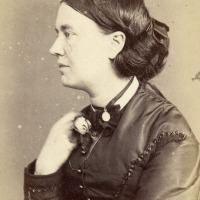
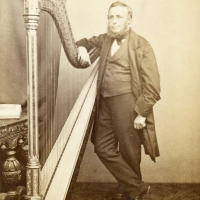
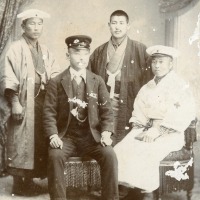
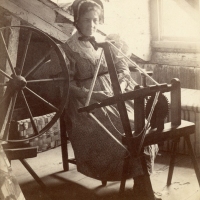
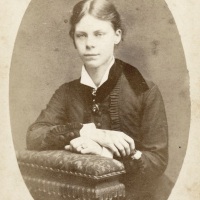
Wonderful photos!
LikeLiked by 2 people
Thank you, Shayne! Thank goodness they’ve stayed together.
LikeLiked by 1 person
This was very interesting – learning about ambrotypes – only popular for about a decade. How wonderful that you have one of those! And what a story to go with it! Love the fact that there was a newspaper clipping inside as well. It seems the ladies only had the leap year possibility to offer sleigh rides to the men in the village – such different times 🙂
LikeLiked by 2 people
You know, it hadn’t occurred to me that the special event–the ladies inviting the men–happened BECAUSE it was a leap year. I had just assumed it was a coincidence, but you must be right. How fun! The little news clipping is very rare and very illuminating. In just a few lines it gives us so much insight into the times.
LikeLiked by 1 person
He is very dapper – and smiling slightly too rather than glowering! How can you tell the difference between an ambrotype and a daguerreotype? I have some old glass plates but never sure which they are.
LikeLiked by 2 people
Ambrotypes are dark images on a piece of glass that is mounted against a light background, which allows the image to stand out and be seen. Daguerreotypes are copper plates coated with silver, so they’re shiny, as long as they haven’t been exposed to air. Your glass plates are probably photographic negatives, since most cameras created negatives on glass before film was invented. The photos were likely taken by one of your ancestors. It’s neat that you have them!
LikeLike
Thanks, that’s useful! Hopefully I’m going to get them looked at and dated at some point.
LikeLiked by 1 person
The images and newspapering clipping, along with your commentary brought this couple to life, as well as the place they lived. You must have been so excited when you discovered the clipping!
LikeLiked by 1 person
I knew about the clipping when I bought the photos, which is one reason I was very excited to buy them. The portraits are really nice in and of themselves, but the clipping adds so much color. Without it we’d never know that Charlie Crippen played the violin!
LikeLiked by 1 person
I hope you’re able to find more of these!
LikeLiked by 1 person
I wasn’t familiar with ambrotypes. Charles is smiling; not very common in most of the early photos. Poor Susan; losing both husband and son so soon. Charles played the violin at what sounds like a very entertaining leap year celebration.
LikeLiked by 1 person
Charles has a genial expression. I feel like I know his personality just from this one portrait. (The other one of him on Find-a-Grave is more serious.) The fact that he entertained others with his music also gives us insight into his personality. He must have been a fun person to be around.
LikeLiked by 1 person
Very nice, subtle tinting on Susan’s ambrotype. I really like the way Charles looks–maybe the smile?
LikeLiked by 1 person
Yes, Susan’s daguerreotype is lightly tinted in a few places–her cheeks, her jewelry and the tablecloth. Tinting can be distracting, but here it’s done subtly and skillfully. It’s a very fine image.
Charles has a warm, friendly expression. And he played dance music on his violin. He must have been a great guy!
LikeLike
How fun to learn about ambrotypes. I wasn’t familiar with them before this. As they’re on glass I would imagine a great many of them would have gotten broken over time. Charles Crippen is very dashing! He reminds me of Gregory Peck. And I can just imagine him playing the violin. Thanks Brad! ☺️
LikeLiked by 1 person
Yes, ambrotypes do tend to get broken, even though they were sold in cases. Fragility was their biggest drawback. But the ones that have survived are nice. The images are quite sharp, even if not quite as detailed as daguerreotypes.
I can see the resemblance to Gregory Peck. 😉
LikeLiked by 1 person
Like Jane, I would also like to know how to tell the difference between daguerreotypes and ambrotypes. These are great images, and how nice they were both musicians.
LikeLiked by 1 person
As I wrote to Jane, ambrotypes are dark images on a piece of glass that is mounted against a light background, which allows the image to stand out and be seen. Daguerreotypes are copper plates coated with silver, so they’re shiny, as long as they’ve remained sealed and haven’t been exposed to air, which causes them to tarnish. If you hold one of each in your hands, the difference should be clear. Antiques stores usually have some of each, so you can acquaint yourself with them that way. Looking at them from a distance won’t help much, though; it’s better to get close to them.
LikeLiked by 1 person
Thank you! I know that with a daguerreotype, I have to tilt the image to see it clearly. Sounds like that isn’t necessary with the ambrotype.
LikeLiked by 1 person
That’s right. Apparently one of the selling points of ambrotypes was that you don’t have to tilt them. Tilting doesn’t seem like that big a deal to me.
LikeLike
More interesting photos, Brad!
Was tinting a thing then? Susan’s cheeks appear artificially tinted pink.
I love the sleigh ride article, a wonderful snapshot into what young adults did for fun in those times. The detail that the women paid for the activity a hint of times to come!
LikeLike
Yes, tinting was a common practice in the early days, when photographers tended to bill themselves as artists. I like the subtle tints on Susan’s cheeks, on her jewelry and on the tablecloth. The colors enhance without being distracting. When paper photographs take over a few years later, tinting mostly goes out of style.
I love the fact that the women invited the men and paid for the dinner. Very progressive! 😄
LikeLike
Another wonderful post…. I am about to go down a rabbit hole to learn more about the flutina she is holding!
LikeLiked by 1 person
I went down that rabbit hole and it was fun. Did you listen to any flutina videos on YouTube? I can post a link here if you didn’t get that far. 🙂
LikeLike
Nice to have so much info to go with the pictures.
LikeLiked by 1 person
I wish every old photo came with a news clipping!
LikeLiked by 1 person
What bold young ladies to take advantage of Leap Year! Ambrotype is new to me. Sad that she lost husband and son. She probably could not have taken care of the farm by herself. He seems to have a twinkle in his eyes. Funny that there was a newspaper clipping with the photo. Hope all is well with you. Happy holidays!
LikeLiked by 1 person
Thank you for reading and commenting, Jo Nell! Happy Holidays to you, too!
LikeLike
Both fine portrait images, thanks for posting !
Ambrotypes truly democratised photography on both side of the Atlantic. Eventually the price dropped so far that working class families could own a portrait. My favourite part of Henry Mayhew’s ‘London Labour and the London Poor’ is the ‘Statement of a Photographic Man’, a verbatim interview with dodgy practitioner who buys a camera for £5 and learns on the job. About 1850, he is charging 1 shilling and sixpence per portrait, add threepence for hand colouring. Well worth reading !
The name ‘Crippen’ brings a shiver to Brits though. As you may know, Henry Hawley Crippen was an American doctor from Michigan who murdered his wife in the UK and boarded a ship back home with his mistress. Thanks to the new fangled wireless telegraph, he was arrested on reaching home shores. Hanged in Pentonville prison, 1910. So of course, I wonder if a family connection could be traced…
LikeLiked by 1 person
Both of those stories are new to me! I’ll have to look up “London Labour and the London Poor.” Wikipedia and other sites say that ambrotypes are called collodion positives in the UK. Is that generally true? I’ve also read that daguerreotypes were more common here than in the UK, in part because Daguerre required a license in the UK, but not here or anywhere else in the world. That was very unneighborly of him.
I’ve never run across the name Crippen before. And now you tell me the most famous Crippen was a murderer! I suppose every family has at least one bad egg.
LikeLike
Yes, collodion positives or glass positives over here.
You may be right about Daguerreotypes, they were far less common when I went out looking for portraits.
LikeLiked by 1 person
Daguerreotypes aren’t uncommon here, but are usually priced well above other types of early photographs. Some people collect them exclusively. I own very few, maybe half a dozen altogether.
LikeLike
Remarkable portraits just on their own, and the clipping gives them even more humanity. The flutina,,, what do you know about that instrument?
LikeLiked by 1 person
Thank you, John. I read about the flutina but I have to admit that I don’t remember much. I did bookmark a couple of videos on YouTube. This one from Switzerland is a nice short demonstration (1:18). And this rendition of “Oranges in Bloom” from Australia is fun.
LikeLiked by 1 person
When I read ‘flutina,’ it was clear from the photo that it wasn’t a small flute. I wonder how it got that name? Charles seems like an approachable,, fun fellow; I like the thought of him playing for a dance, and I suspect that Susan had a bit of a fun-loving streak, too, despite that somber appearance. We used to have leap year dances when I was in school, and of course there was Sadie Hawkins Day. Most young’uns probably don’t know about that, or would be offended by it, but it was great fun for us.
LikeLiked by 1 person
I’d heard of Sadie Hawkins Day, but not leap year dances! How fun. I doubt young’uns today would be offended by the idea. The link you shared mentioned a tradition of “Ladies’ Day” or “Ladies’ Privilege” associated with Leap Day, Feb. 29. I wonder if the sleigh ride to Lenox took place on that day? We usually have plenty of snow at that time of year. I’d been guessing that the ride to Lenox must have taken place around the New Year holiday, but we don’t always have snow by then, so Feb. 29 would make more sense.
LikeLiked by 1 person
I wonder who played this instrument? Maybe her husband, or her son? It is a pity that it was impossible to record music. Fantastically amazing pictures!
LikeLiked by 1 person
Her son died in infancy (sixteen months old), but her daughter lived until 1935. Thank you for your nice comment!
LikeLike
It’s like Little House on the Prairie! Except not on the prairie, but the farming life probably wasn’t that different in Massachusetts.
Yes, as someone else pointed out, the name “Crippen” has rather ghastly associations here.
Berkshire, by the way, is the county just south of where I’m sitting – in fact, Abingdon was in Berkshire until they changed the boundaries in 1974.
LikeLiked by 1 person
The sleigh ride sounds idyllic, doesn’t it? If people could take a sleigh ride today, followed by dinner, music and dancing, I bet they’d jump at the chance. No cars, no phones, no electricity … just good food, good company and good music!
LikeLike
Very good post. Your job bring us the little history, which is hidden under the History. Thanks!
LikeLiked by 1 person
Vielen Dank, Xavier!
LikeLike
Sad to hear about this woman losing her baby so soon after losing her husband.
But, on another note, it was interesting to learn more about ambrotype, which I’d never heard of before.
LikeLiked by 1 person
Interesting prop with the bottom picture.
LikeLiked by 1 person
It is, isn’t it? I’d be curious to know if it was actually hers or if it was just a studio prop.
LikeLike